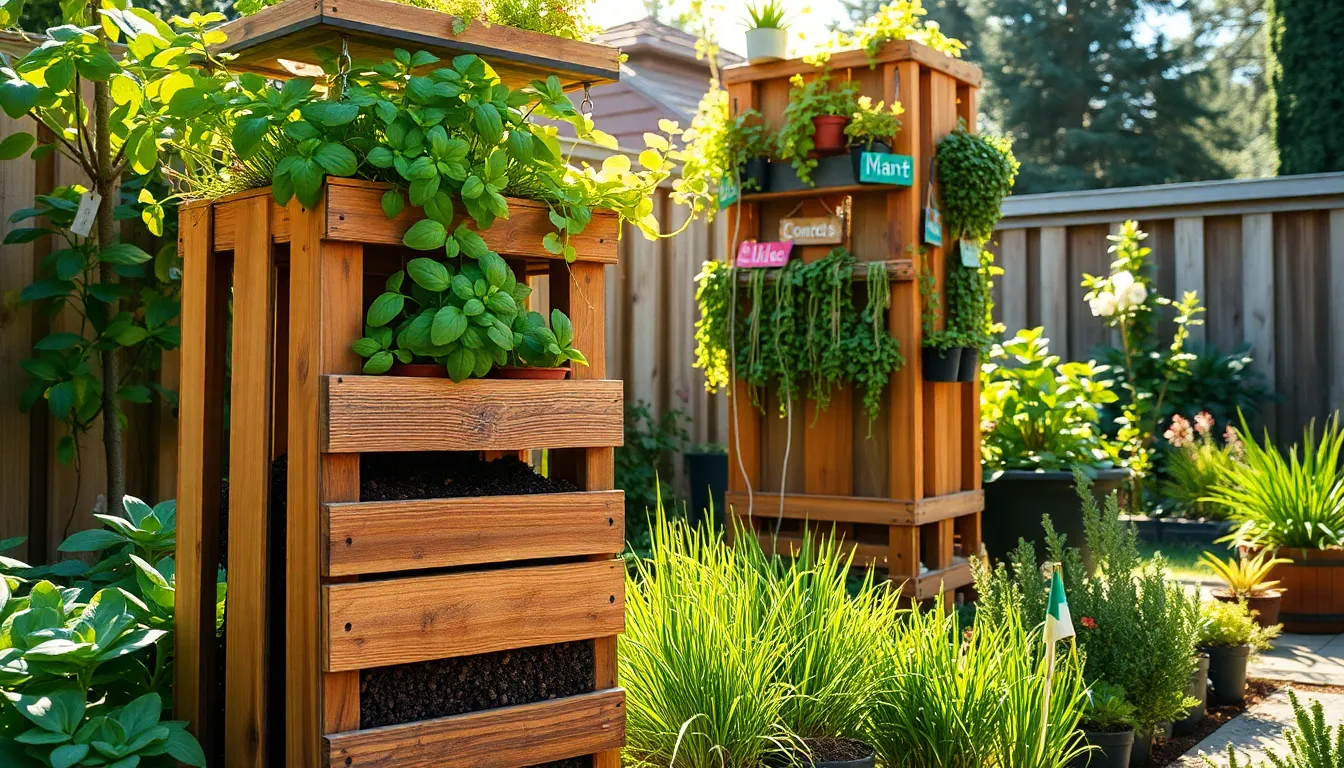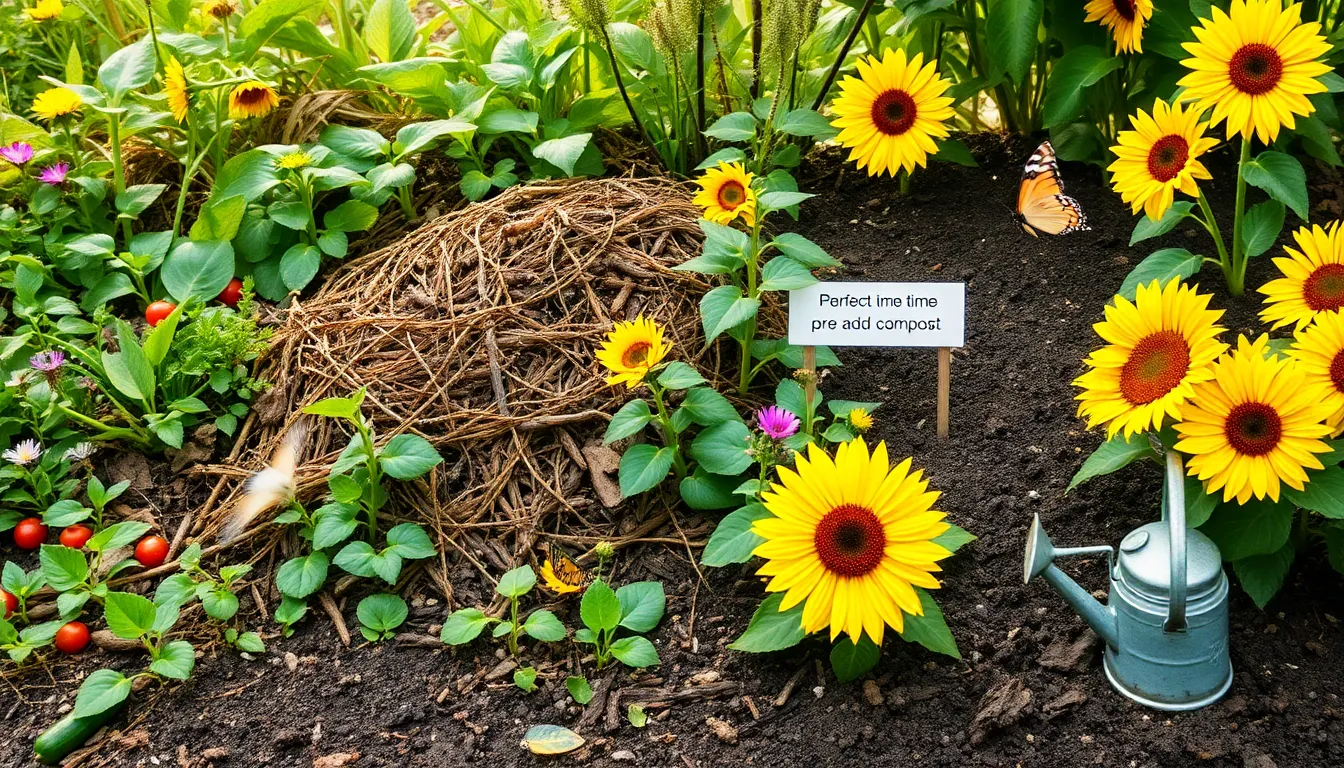Welcome to “12 Creative Organic Gardening Tips,” where the art of gardening meets the joy of discovery, tailored for both newcomers and seasoned green thumbs alike. Whether you’re just dipping your fingers in the soil or have already cultivated a thriving oasis, these innovative techniques will inspire and empower you to elevate your garden’s potential.
In this guide, you’ll uncover a treasure trove of design ideas that blend creativity with practicality, allowing you to craft a garden that’s as productive as it is beautiful. With each tip, you’ll gain insights into sustainable practices that promise not only to enrich your soil but also to boost your harvest and foster a deeper connection with nature.
Embark on this journey with us and feel confident as you transform your garden into an organic haven, bursting with life and color. The practical benefits you’ll reap—ranging from healthier plants to a more vibrant ecosystem—will make every moment spent in your garden a rewarding experience.
Compost Kitchen Scraps Efficiently
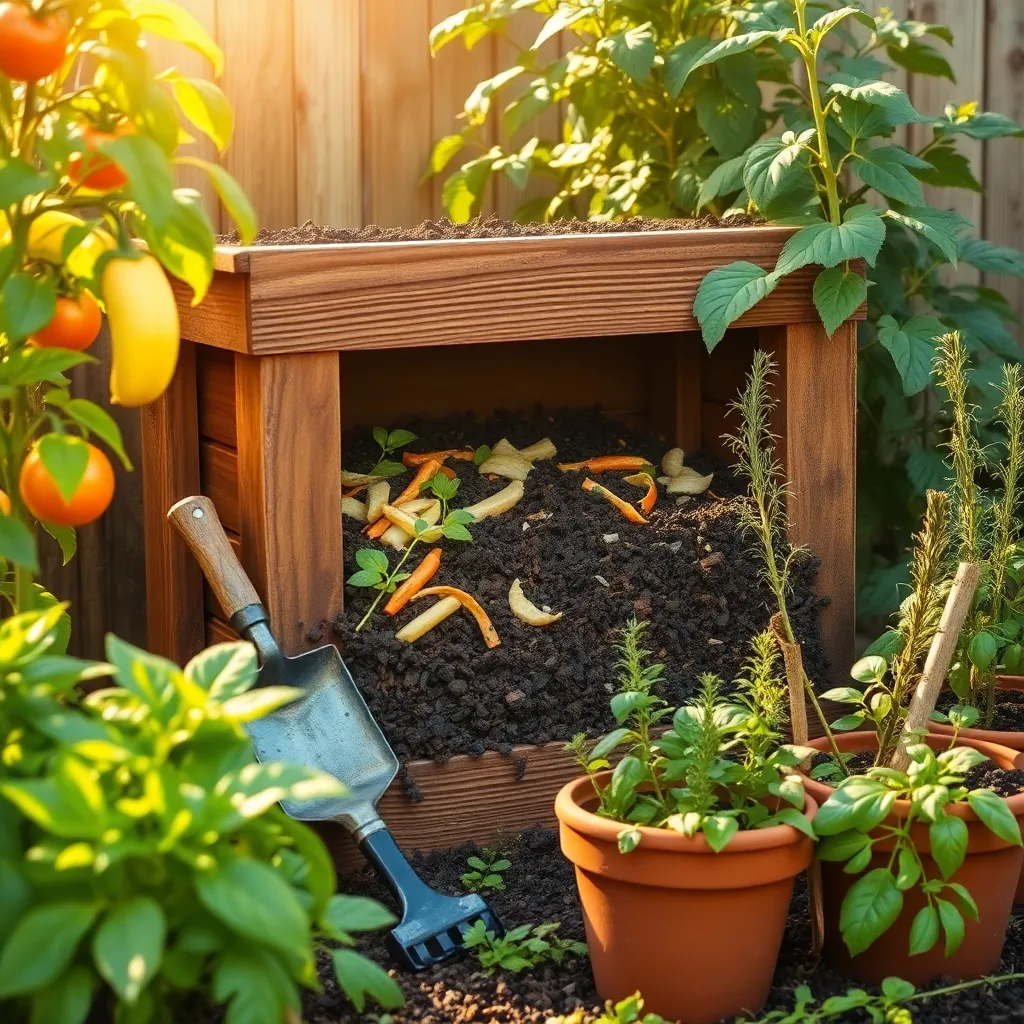
One of the most effective ways to reduce waste and enhance your garden is to compost kitchen scraps. Start with vegetable peels, fruit scraps, coffee grounds, and eggshells, which decompose quickly and enrich compost with essential nutrients.
To optimize the composting process, chop larger scraps into smaller pieces. This increases the surface area for microbes to work on, speeding up decomposition and yielding faster results.
Balance your compost by maintaining a ratio of roughly 3:1 between brown materials (like dried leaves or shredded paper) and green materials (your kitchen scraps). This ensures the compost remains aerated and doesn’t become too wet, which can lead to a foul odor.
For those with more experience, consider setting up a two-bin system. This allows you to have one bin actively composting while the other is curing, ensuring a continuous supply of rich compost throughout the year.
Rotate Your Crops Annually
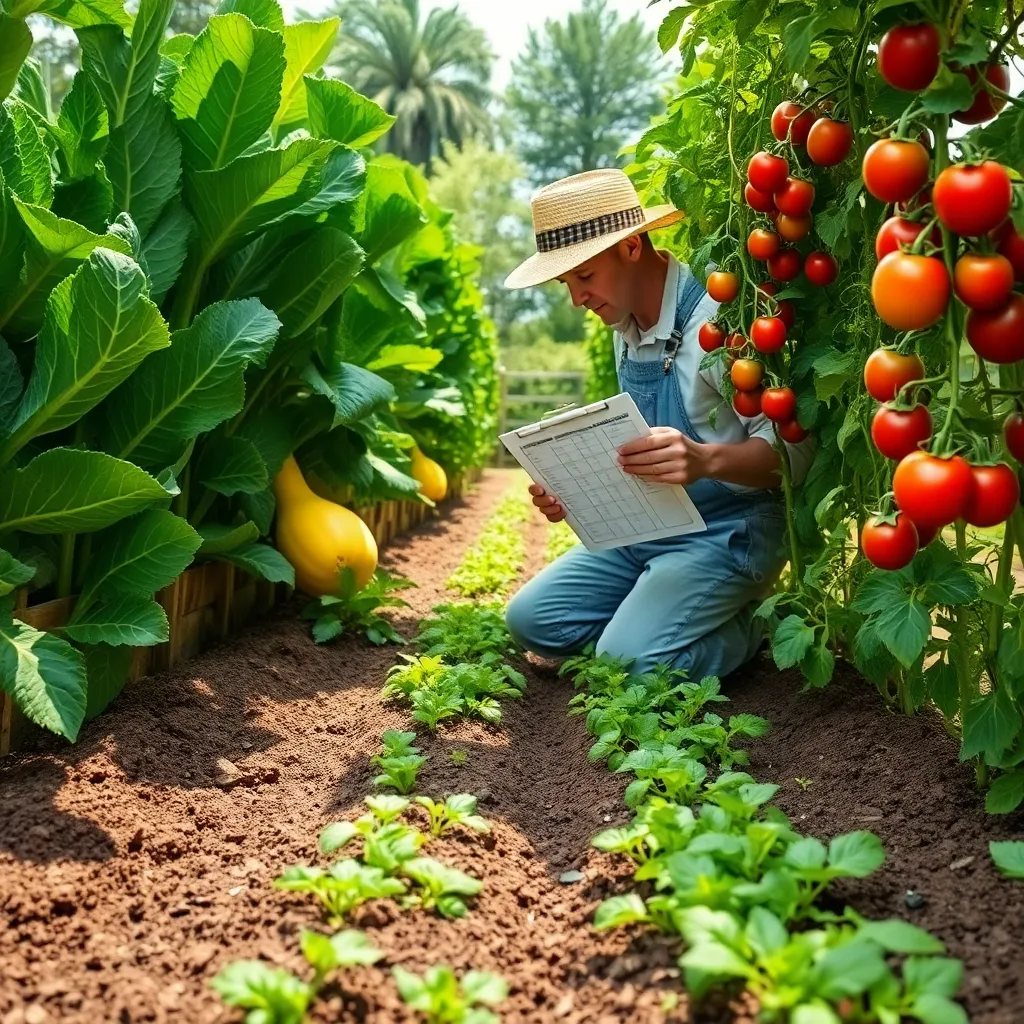
To maintain healthy soil and prevent disease buildup, it’s crucial to rotate your crops annually. This practice involves changing the location of specific plant families each year, which disrupts pest and disease cycles.
Begin by grouping your plants into families, such as solanaceous (tomatoes, peppers) or brassicas (cabbage, broccoli). Once grouped, rotate these families to different plots every season, ensuring no family returns to the same spot for at least three years.
For beginners, a simple rotation plan might include moving leafy greens to where root vegetables grew last year. More advanced gardeners can use a four-part rotation system, which includes legumes to naturally replenish nitrogen in the soil.
To enhance your rotation strategy, keep detailed records of where you plant each crop family annually. This helps track patterns and make informed decisions for future planting, ensuring your garden remains productive and healthy.
Plant Cover Crops in Off-Season
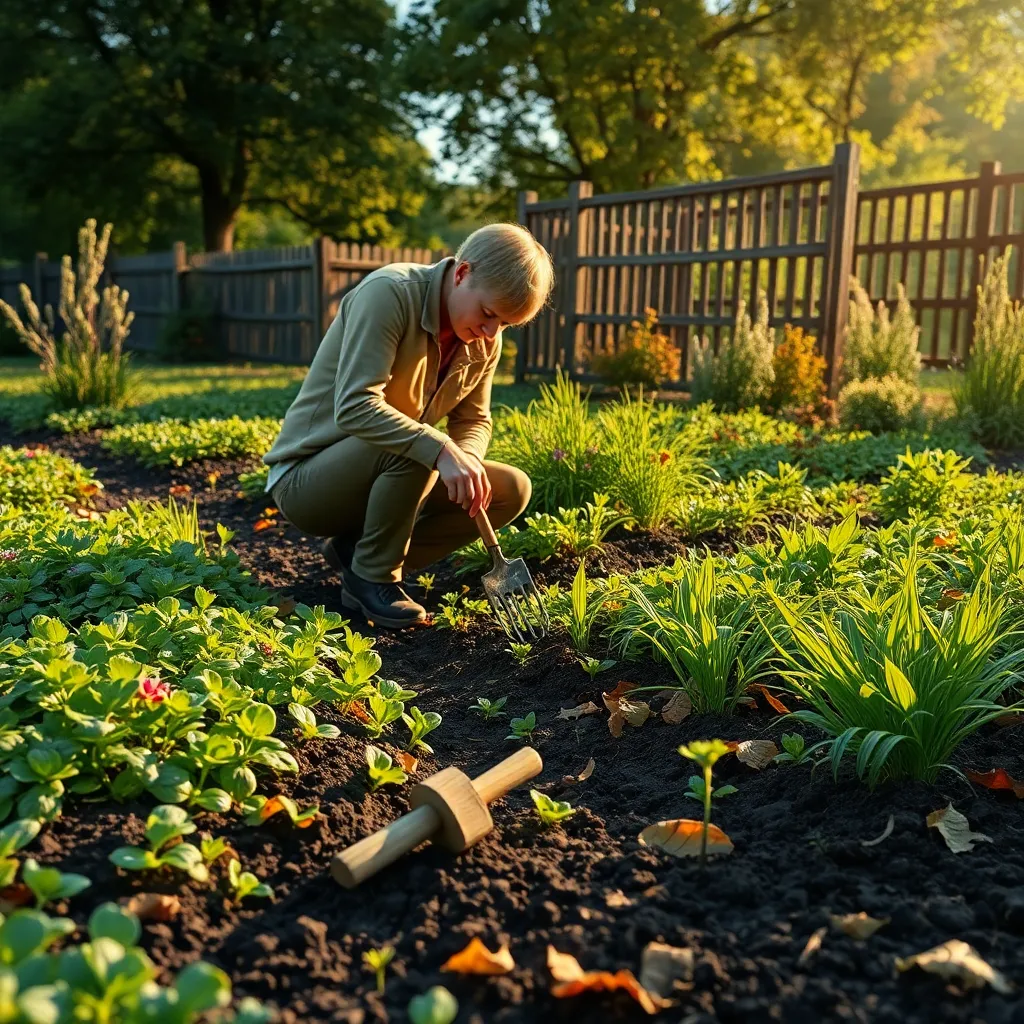
As you consider ways to enhance your garden’s health during the off-season, planting cover crops is a highly effective strategy. These crops, often referred to as “green manure,” improve soil structure and add valuable nutrients, especially nitrogen, back into the soil.
Crops like clover, vetch, and rye are excellent choices for this purpose. They not only replenish the soil but also help suppress weeds, reducing the workload for the next planting season.
It’s important to select cover crops that suit your local climate and soil conditions. For gardeners in colder regions, winter rye can handle frosty conditions, while legumes like clover are ideal for nitrogen fixation in milder climates.
Begin planting your cover crops shortly after harvesting your main crops. Ensure the soil is well-prepared by loosening it with a garden fork and removing any debris to promote optimal germination.
- Water your cover crops regularly to keep the soil consistently moist but not waterlogged, especially during the early stages of growth.
- As spring approaches, consider mowing down the cover crops before they set seed to prevent any unwanted self-seeding.
- Incorporate the crop residues into the soil by tilling them under at least two weeks before planting your next main crop, allowing time for decomposition.
By integrating cover crops into your gardening routine, you’ll create a robust, nutrient-rich foundation for future plantings. This practice not only enhances soil health but also contributes significantly to sustainable, organic gardening practices.
Create Natural Pest Barriers
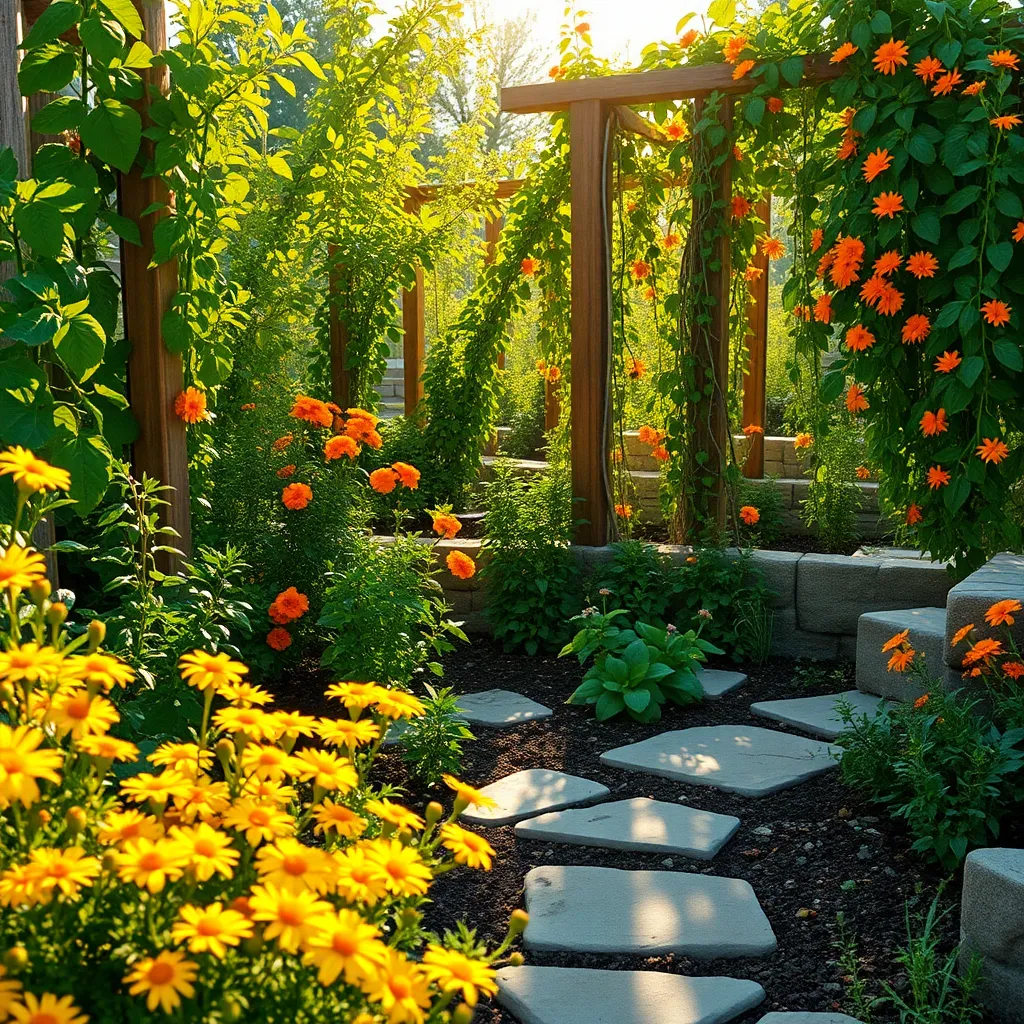
Creating natural pest barriers is an effective way to protect your garden without resorting to chemicals. Companion planting is a practical method where certain plants are grown together to repel pests from each other. For instance, planting marigolds alongside tomatoes can deter nematodes, while basil can help repel thrips and flies.
Another strategy involves using physical barriers such as floating row covers or insect netting. These barriers prevent insects like cabbage worms and beetles from reaching your crops, while still allowing light and rain to nourish them. Ensure that the covers are well-secured at the edges to prevent pests from sneaking in.
Incorporating plants with strong scents, like garlic or chives, can also deter pests. Their pungent aromas can mask the scent of more vulnerable plants, confusing insects and reducing infestations. Additionally, these aromatic plants require minimal care, thriving in well-drained soil with moderate watering—perfect for beginners and experienced gardeners alike.
For those with a bit more experience, consider establishing a diverse habitat that attracts beneficial insects like ladybugs and lacewings, which naturally control pest populations. Planting a variety of flowers, such as yarrow and dill, can invite these helpful insects into your garden. This approach not only reduces pests but also promotes a balanced ecosystem, fostering a healthier garden environment.
Incorporate Companion Planting Strategies
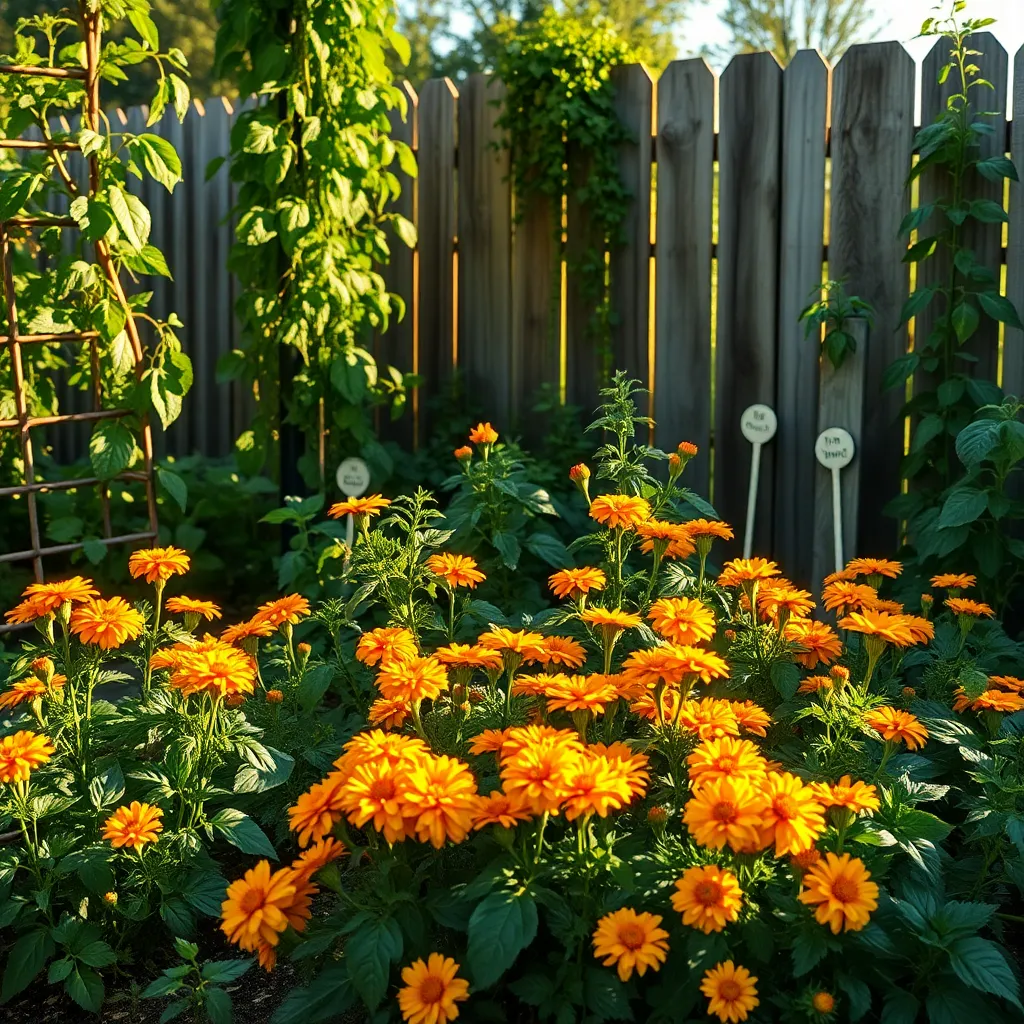
Companion planting is an effective strategy to enhance plant growth and deter pests naturally. By pairing complementary plants together, you can boost productivity and create a healthier garden ecosystem.
For instance, growing marigolds alongside tomatoes can help repel nematodes and other harmful insects. These vibrant flowers not only beautify your garden but also serve as a natural pest deterrent.
Another effective combination is planting carrots with onions. While carrots can improve the soil structure, onions can deter pests that typically target carrots, such as carrot flies.
To maximize the benefits, it’s crucial to understand the specific needs of each plant in your companion pairings. Ensure that both plants have compatible soil and water requirements, such as well-drained soil and moderate watering for both carrots and onions.
Advanced gardeners might explore the guild planting technique, which involves grouping plants that support each other. For example, a corn, beans, and squash trio—known as the “Three Sisters”—provides mutual benefits like nitrogen fixation and weed suppression.
When planning your garden layout, consider incorporating a mix of flowers and herbs that offer pest control and pollination benefits. Herbs like basil and dill can attract beneficial insects, while flowers like nasturtiums act as trap crops to lure pests away from your vegetables.
Utilize Rainwater for Irrigation
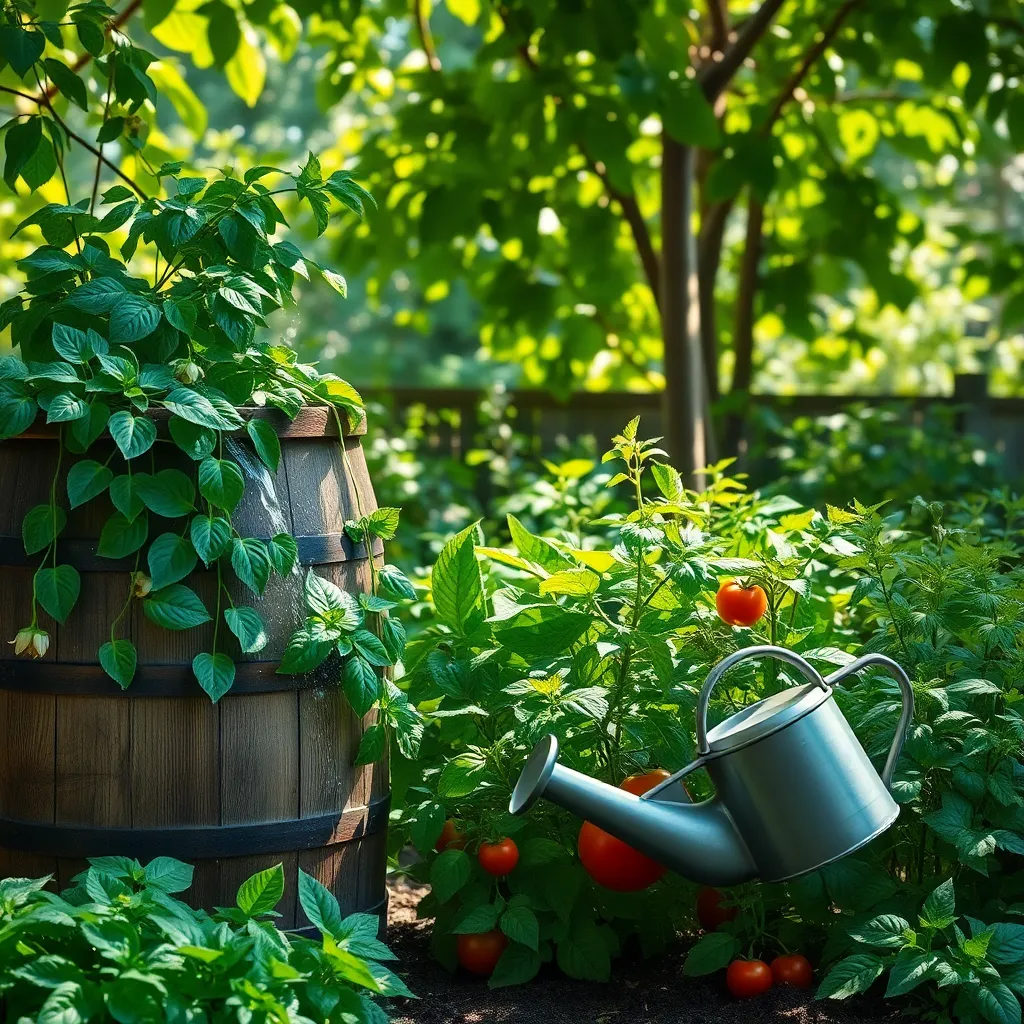
To effectively use rainwater for irrigation, start by setting up a simple rain barrel system connected to your gutter downspouts. This setup allows you to collect and store valuable water resources, ensuring your garden remains hydrated without relying solely on tap water.
Position your rain barrels strategically near garden beds for easy access and gravity-fed watering. This minimizes the need for additional equipment, making it a cost-effective solution for maintaining a lush, healthy garden.
For beginners, using rainwater can be as simple as attaching a soaker hose to your rain barrel spigot. This method delivers water directly to the soil, reducing evaporation and ensuring that moisture reaches plant roots efficiently.
Advanced gardeners might consider incorporating a drip irrigation system, which can be connected to a rainwater supply. This allows for precise control over water distribution, making it easier to meet the specific needs of different plants in your garden.
Apply Mulch to Conserve Moisture
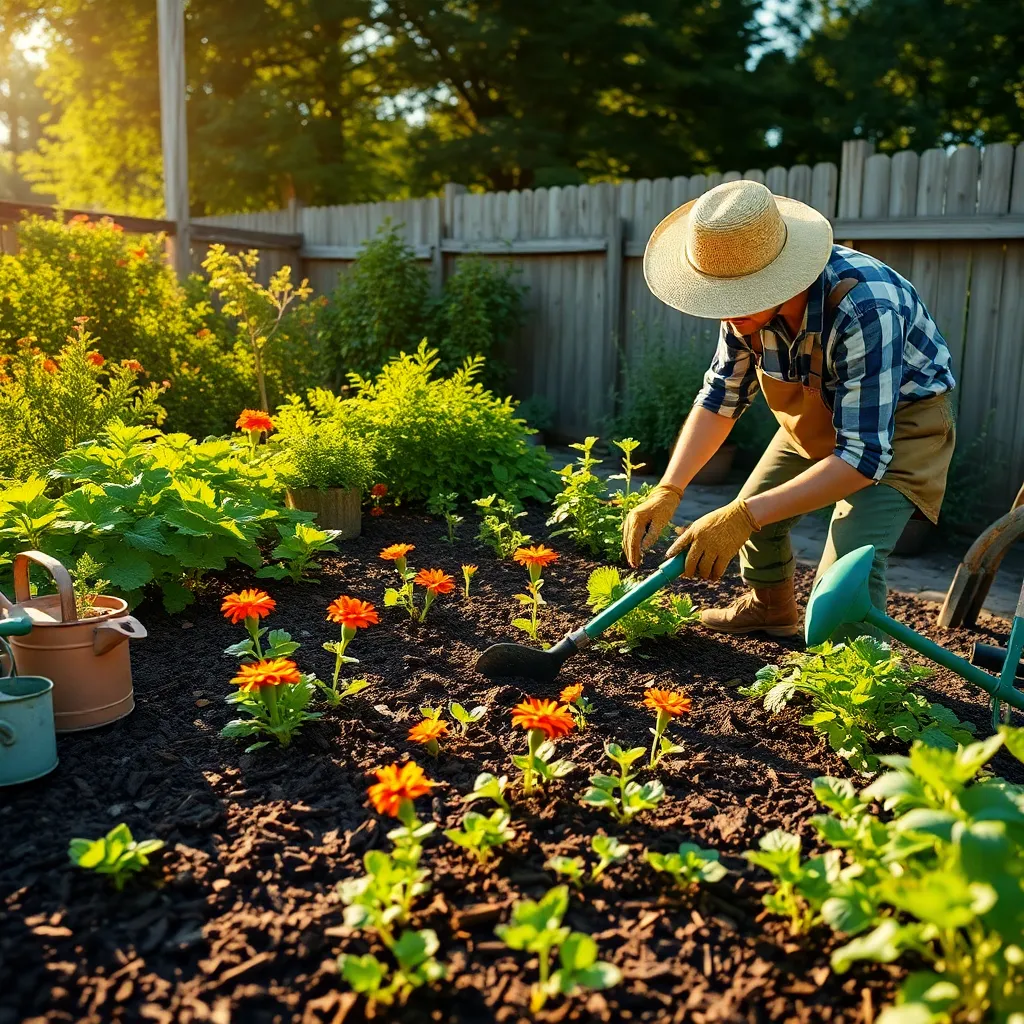
Applying mulch is an effective way to conserve moisture in your garden, creating a healthier environment for your plants. By covering the soil with organic materials like straw, wood chips, or grass clippings, you can reduce evaporation and keep the soil consistently moist.
For beginners, start by spreading a layer of mulch about 2 to 4 inches thick around your plants, ensuring you leave a small gap around the stems to prevent rot. Choose mulch that suits your soil type; for example, wood chips work well in clay soils, while lighter options like straw are ideal for sandy soils.
Mulch not only conserves moisture but also helps regulate soil temperature, keeping roots cooler in the summer and warmer in the winter. In addition, as organic mulch breaks down, it adds nutrients back into the soil, enriching it naturally and reducing the need for chemical fertilizers.
Advanced gardeners can use mulch to suppress weeds, which compete with your plants for water and nutrients. Be sure to refresh the mulch layer as needed, especially after heavy rains or when you notice it thinning, to maintain its effectiveness in moisture conservation and weed suppression.
Select Native Plants for Resilience
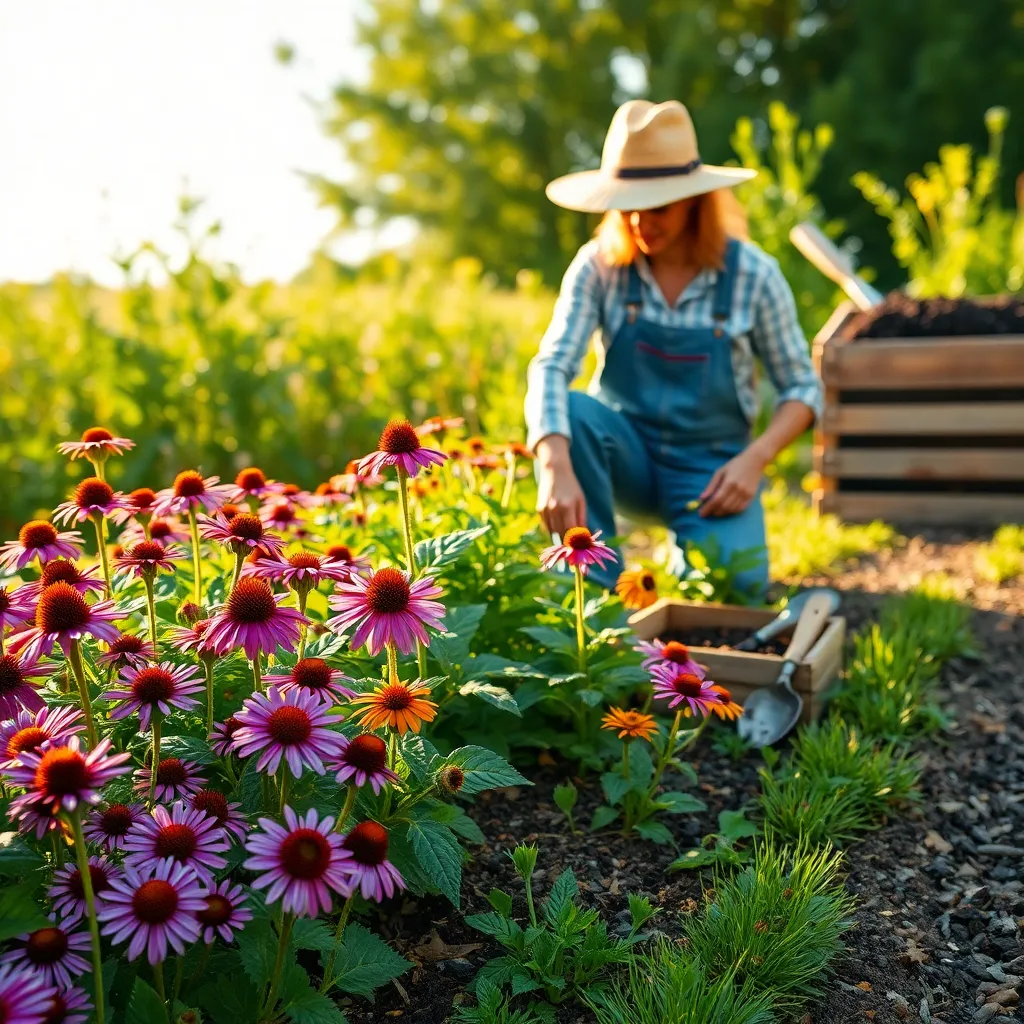
Choosing native plants can greatly enhance the resilience of your garden. These plants are naturally adapted to local conditions, making them more drought-tolerant and disease-resistant.
Begin by researching which plants are native to your region, as they will require less maintenance and fewer resources. Consider incorporating a mix of grasses, wildflowers, and shrubs to create a diverse and sustainable ecosystem.
For beginners, plants like coneflowers and black-eyed Susans are excellent choices as they thrive in a variety of soil types and require minimal care. Ensure these plants receive about 1 inch of water per week, either from rainfall or supplemental watering.
Advanced gardeners might explore integrating native trees like oaks or maples, which provide shade and habitat for local wildlife. To promote healthy growth, plant these trees in well-drained soil and mulch around their base to retain moisture.
Encourage Beneficial Insects Naturally
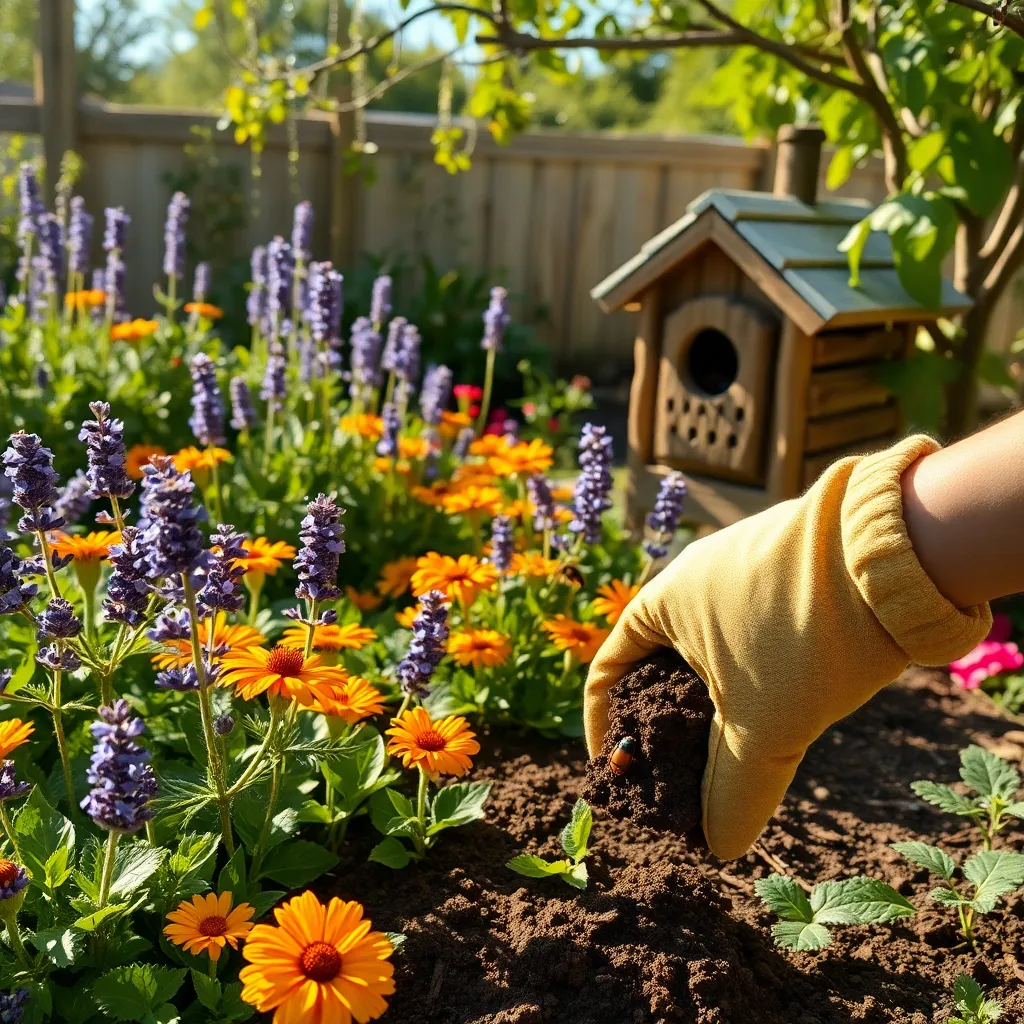
Encouraging beneficial insects in your garden is a natural way to promote plant health and reduce the need for chemical interventions. Start by incorporating a variety of plants that attract beneficial insects such as ladybugs, lacewings, and parasitic wasps. These insects feed on common garden pests like aphids and caterpillars, providing a natural form of pest control.
To create an inviting environment for these helpful insects, consider planting herbs like dill, fennel, and cilantro. These plants not only enhance your culinary efforts but also provide essential pollen and nectar for beneficial insects. A diverse garden with varying plant heights and structures will also offer habitats and shelter for these insects, further encouraging their presence.
Another effective strategy is to avoid using broad-spectrum pesticides, which can kill both harmful and beneficial insects. Instead, focus on organic solutions such as insecticidal soaps or neem oil for targeted pest control. By reducing pesticide use, you allow the natural ecosystem to balance itself out, making your garden more resilient to pest outbreaks.
Advanced gardeners might consider creating a small wildlife pond or water feature to attract dragonflies, which are excellent at controlling mosquito populations. Such features also provide a water source for other beneficial insects during dry periods. The presence of water can enhance biodiversity in your garden, making it a dynamic and thriving ecosystem.
Prune Regularly for Plant Health
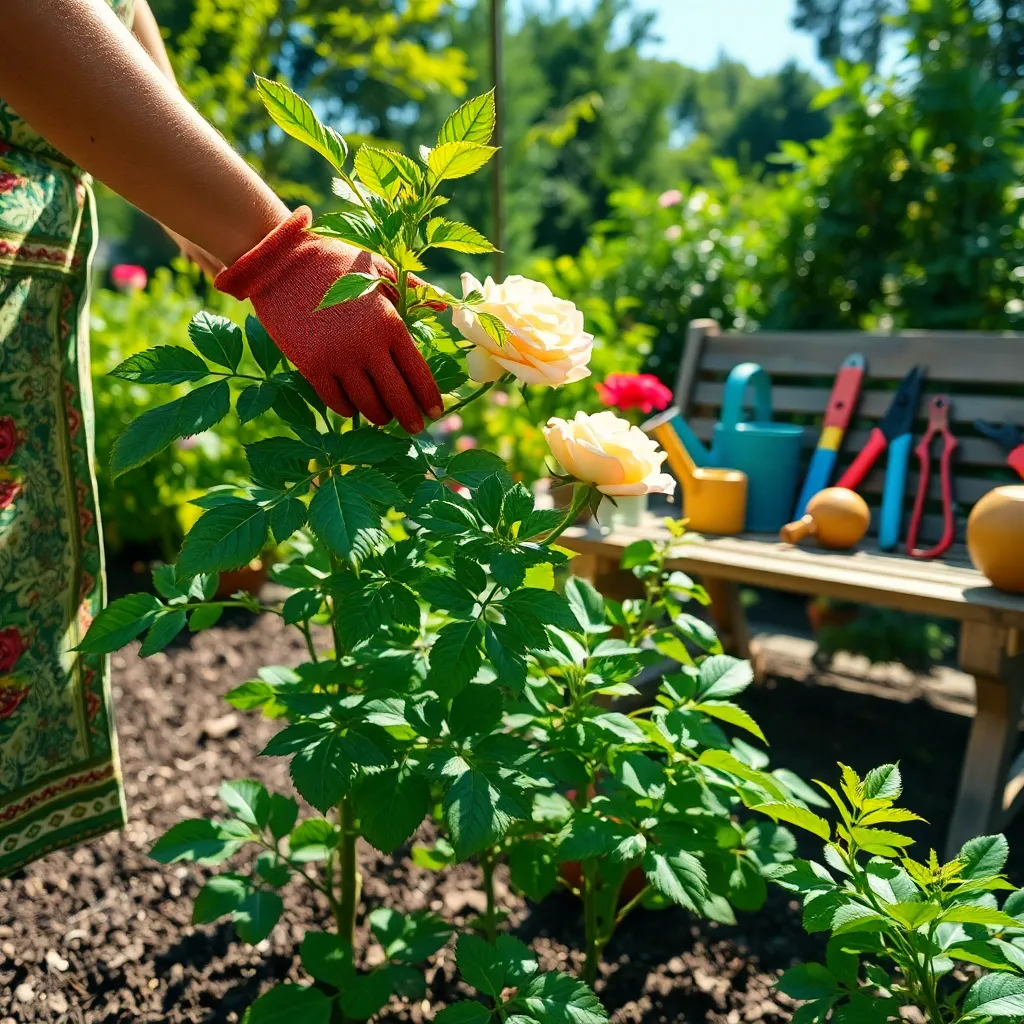
Regular pruning is essential for maintaining the health and vigor of your plants. By removing dead or diseased branches, you help prevent the spread of infections and improve air circulation, which can deter pests and fungal diseases.
For beginners, a good rule of thumb is to prune during the dormant season for most shrubs and trees. This period typically falls in the late winter or early spring, depending on your climate, allowing you to shape the plant before new growth begins.
Advanced gardeners might consider using pruning to encourage more prolific blooming and fruiting. For example, thinning out crowded branches can direct energy towards producing larger blooms or fruits, enhancing the overall productivity of your garden.
When pruning, always use sharp, clean tools to make precise cuts. This reduces the risk of injury to the plant and minimizes the chance of introducing any pathogens.
Use Organic Fertilizers Thoughtfully
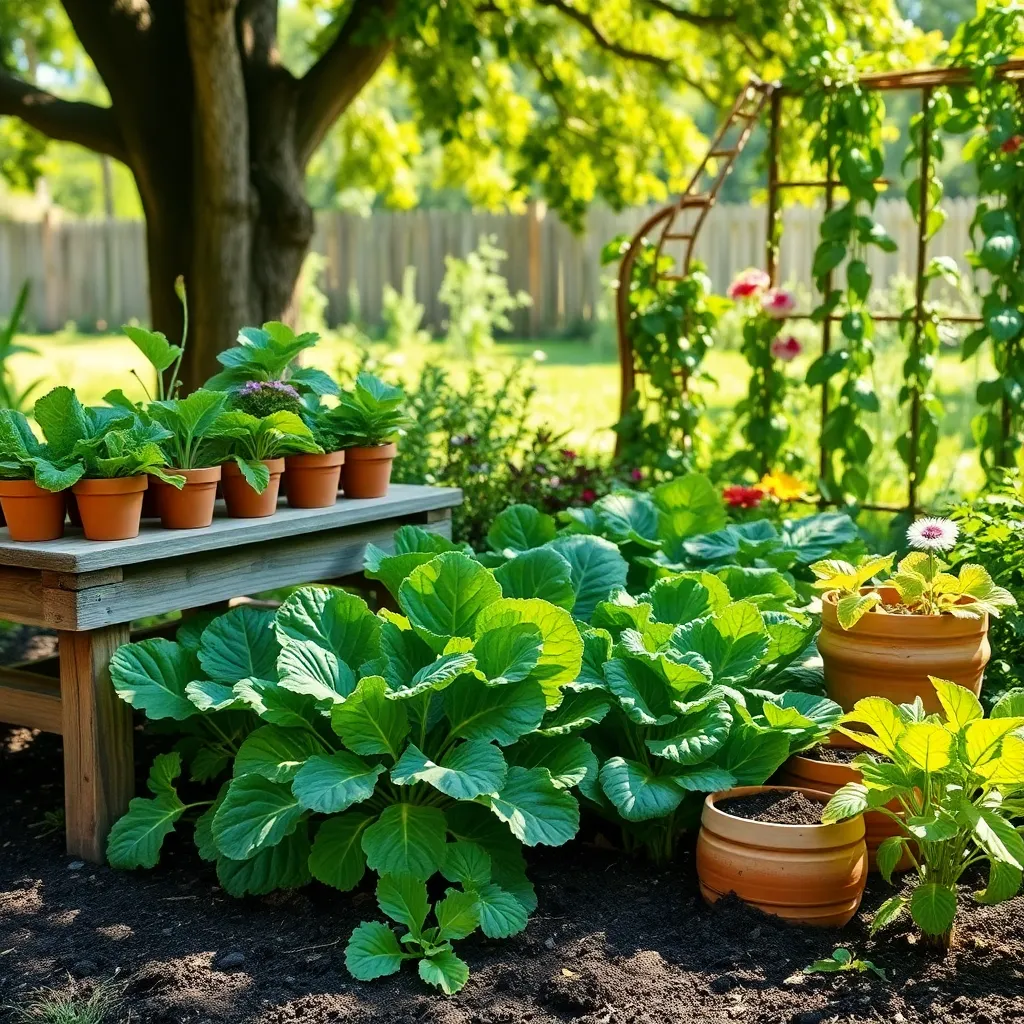
Organic fertilizers are a fantastic way to nourish your plants while maintaining an eco-friendly garden. However, it’s important to use them thoughtfully to avoid over-fertilization, which can harm your plants and the environment.
Begin with a soil test to understand your garden’s nutrient needs. This will help you choose the right type of organic fertilizer, whether it’s compost, manure, or a commercial organic option.
When applying organic fertilizers, it’s crucial to follow the recommended amounts on the packaging. Overuse can lead to nutrient imbalances, which might inhibit plant growth and lead to nutrient runoff into waterways.
Advanced gardeners might experiment with making their own compost tea, a liquid fertilizer that can be applied directly to plants for an extra nutrient boost. Regularly applying such organic amendments will gradually improve your soil’s health, promoting stronger and more resilient plants.
Implement Raised Beds for Better Drainage
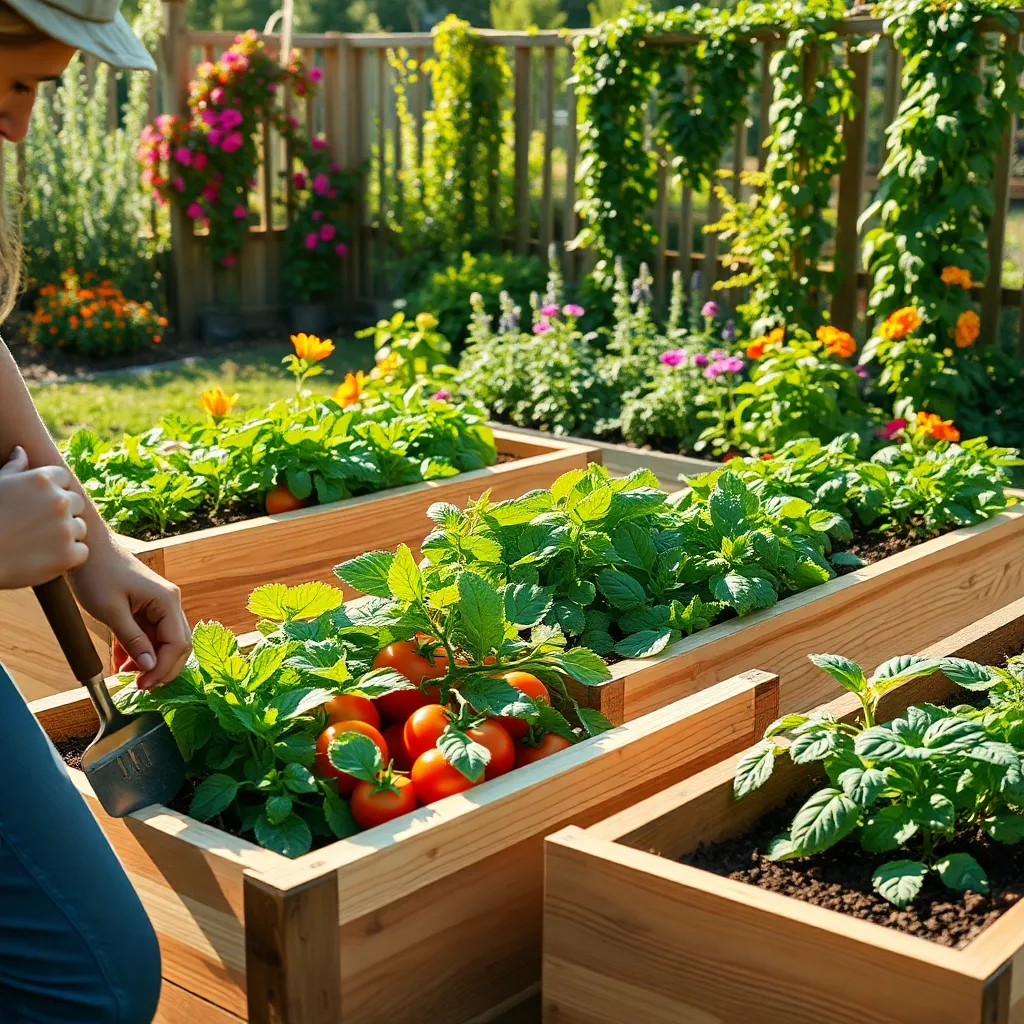
Raised beds are a fantastic way to improve drainage in your garden, especially if you have heavy clay soil. By elevating your garden beds, you allow excess water to drain away more effectively, preventing root rot and other moisture-related issues.
To construct a raised bed, use materials like untreated wood, stone, or recycled bricks, ensuring they are safe for growing food. Aim for a height of at least 6 to 12 inches, which helps roots to grow freely and reduces compaction, enhancing soil aeration.
When filling your raised bed, use a mix of topsoil, compost, and organic matter to create a nutrient-rich environment for your plants. This combination not only supports healthy plant growth but also improves drainage and retains moisture during dry spells.
Plant a variety of crops in your raised beds to maximize space and improve soil health. Consider planting deep-rooted vegetables like tomatoes and carrots alongside shallow-rooted ones like lettuce and radishes to optimize nutrient use and promote biodiversity.
Conclusion: Growing Success with These Plants
As we wrap up our exploration of ’12 Creative Organic Gardening Tips,’ we’ve unearthed a dozen powerful concepts that can transform your relationship into a flourishing garden of love and understanding. From nurturing strong communication and cultivating trust, to embracing vulnerability and celebrating each other’s growth, these strategies are designed to enrich your partnership. We’ve also highlighted the importance of setting healthy boundaries, fostering gratitude, and keeping the spark alive through shared experiences.
To plant the first seed of transformation, consider setting aside some uninterrupted time this week to discuss one of these concepts with your partner. Open the conversation with curiosity and a willingness to grow together.
Remember, the key to a thriving relationship is ongoing care and attention. Bookmark this article as a handy reference, so you can revisit these tips and continue to nurture your connection.
Looking ahead, with consistent effort and love, your relationship can blossom into a resilient bond that withstands the test of time. May each step you take today lead to a bountiful harvest of shared joy and deepened intimacy. Save this guide as your go-to resource for cultivating the relationship you’ve always envisioned.


